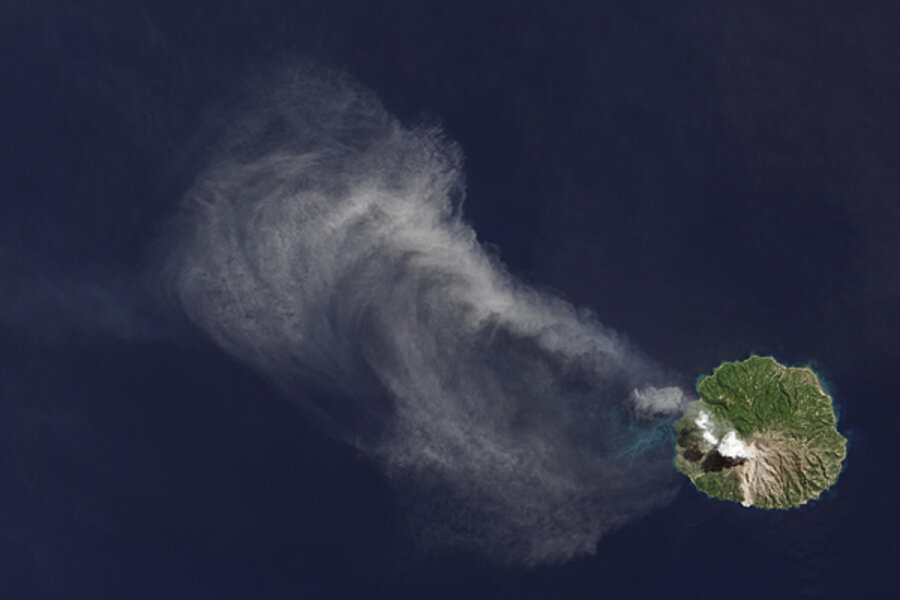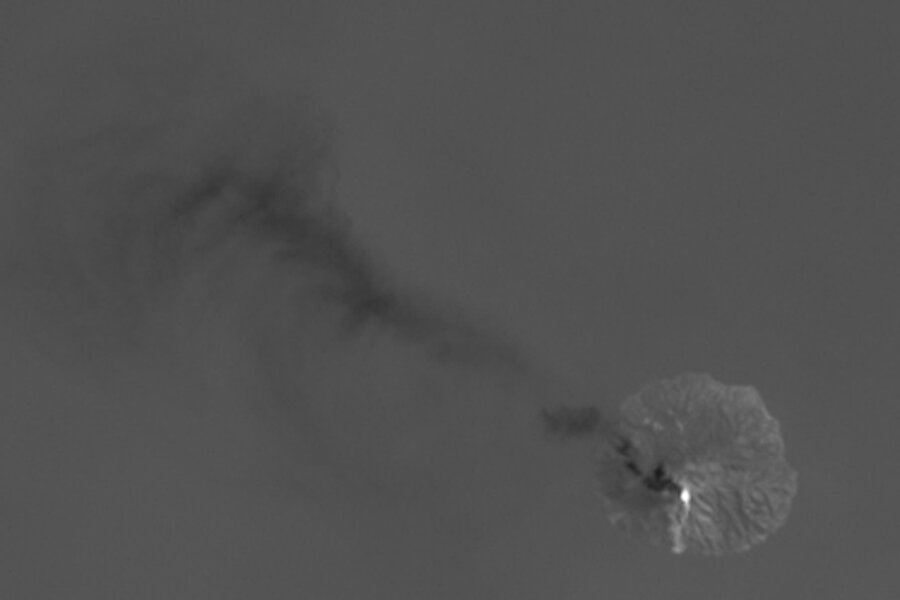NASA satellite snaps spectacular images of volcanic eruption
A NASA satellite has demonstrated that the best place to view an erupting volcano is from 438 miles straight up.
On April 29, the Landsat Data Continuity Mission satellite passed over Indonesia's Flores Sea and snapped several shots of Paluweh island, the scene of a volcanic eruption in progress.
Two of the satellite's instruments imaged the volcano, which awoke last October. The Operational Land Imager, which detects visible light, as well as infrared, and short-wave electromagnetic radiation, snapped a photo of the smoke and ash spewing from the volcano. The Thermal Infrared Sensor captured the heat from the lava.
"Each instrument by itself is magnificent," said Betsy Forsbacka, the thermal sensor's manager at NASA's Goddard Space Flight Center, in a press release. "When you put them together, with the clues that each give you on what you're seeing on Earth's surface, it's greater than either could do by themselves."
NASA said the thermal sensor was able to pick out the actual lava flow from the cooler surrounding areas. It can also tell differences in temperature as slight as one-tenth of a degree Celsius.
"We can image the white, representing the very hot lava, and right next to it we image the gray and black from the cooler surrounding ash," Forsbacka said. "It's exciting that we're imaging such diverse thermal activity so well."
A collaboration between NASA and the US Geological Survey (USGS), the satellite launched on Feb. 11, 2013. It joins the Landsat 5 and Landsat 7 satellites, which have been in orbit since 1984 and 1999 respectively, to produce stunning photos of Earth’s surface along with an abundance of scientific data.
The satellite, which is known as Landsat 8, is the eighth Earth-snapping satellite since NASA began the Landsat program in 1972.
Our planet has been photographed since the early 1960s, when the agency launched its Mercury program. Today, NASA picks up images of the Earth's surface from its satellites and the International Space Station on a daily basis. As of May 3, the agency has received 1,670,082 views of the Earth, including 1,189,393 from the space station.
Prior to the Paluweh volcano, several recently active ones, such as Ulawu, also known as “the Father,” in Papua New Guinea; Tolbachik on Russia’s Kamchatka Peninsula; Aldaid on the Kuril Islands between Japan and the Kamchatka Peninsula were also imaged from Earth's orbit.
So was the ongoing wildfire in Los Angeles. One day after the Springs fire started on May 2, NASA's GOES-West satellite captured images of smoke plumes drifting westward over the Pacific Ocean.








